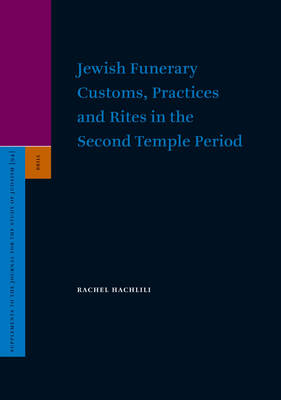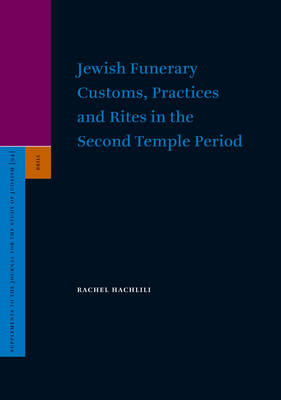
- Afhalen na 1 uur in een winkel met voorraad
- Gratis thuislevering in België vanaf € 30
- Ruim aanbod met 7 miljoen producten
- Afhalen na 1 uur in een winkel met voorraad
- Gratis thuislevering in België vanaf € 30
- Ruim aanbod met 7 miljoen producten
Zoeken
Jewish Funerary Customs, Practices and Rites in the Second Temple Period
Rachel Hachlili
€ 517,45
+ 1034 punten
Omschrijving
Research of burials constitutes one of the main reliable sources of information related to various aspects of funerary practices and rituals, and offers a perception of ancient social life and community organization. The material remains of mortuary rituals is effective in reconstructing the history of a society, its religious beliefs and its social outlook. Tombs offer ample data on the artistic taste evinced by funerary architecture and the ornamentation of receptacles and objects.
Changes in Jewish funerary practices did not alter the plan and architecture of the tombs. Though the funerary rites changed from inhumation in coffins and loculi to secondary burial by collecting bones in ossuaries the artifacts associated with these graves did not modify much and indicate that these were culturally and socially identical people.
The study outlines the material preserved in the ancient Jewish cemeteries of the Second Temple period (first century BCE to first century CE) at Jerusalem, Jericho, 'En Gedi, Qumran and some other tomb sites.
Changes in Jewish funerary practices did not alter the plan and architecture of the tombs. Though the funerary rites changed from inhumation in coffins and loculi to secondary burial by collecting bones in ossuaries the artifacts associated with these graves did not modify much and indicate that these were culturally and socially identical people.
The study outlines the material preserved in the ancient Jewish cemeteries of the Second Temple period (first century BCE to first century CE) at Jerusalem, Jericho, 'En Gedi, Qumran and some other tomb sites.
Specificaties
Betrokkenen
- Auteur(s):
- Uitgeverij:
Inhoud
- Aantal bladzijden:
- 588
- Taal:
- Engels
- Reeks:
- Reeksnummer:
- nr. 94
Eigenschappen
- Productcode (EAN):
- 9789004123731
- Verschijningsdatum:
- 29/11/2004
- Uitvoering:
- Hardcover
- Formaat:
- Genaaid
- Afmetingen:
- 165 mm x 242 mm
- Gewicht:
- 1446 g

Alleen bij Standaard Boekhandel
+ 1034 punten op je klantenkaart van Standaard Boekhandel
Beoordelingen
We publiceren alleen reviews die voldoen aan de voorwaarden voor reviews. Bekijk onze voorwaarden voor reviews.








